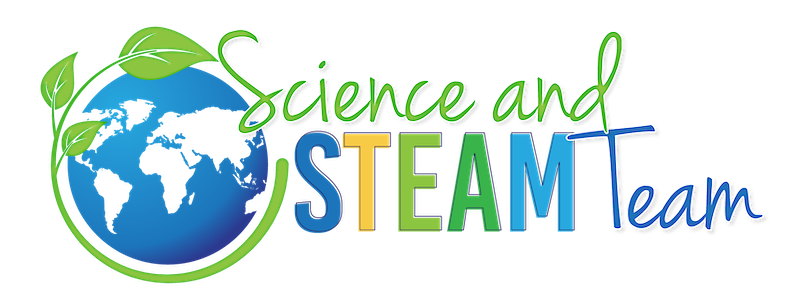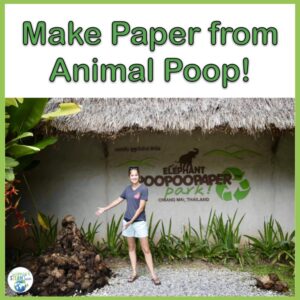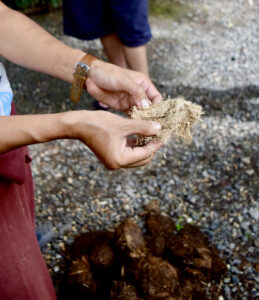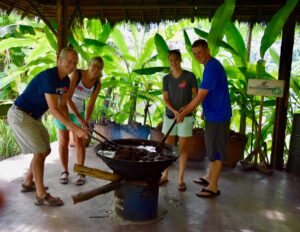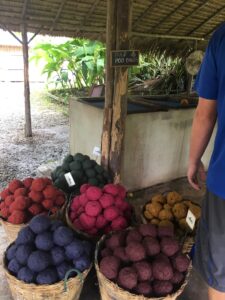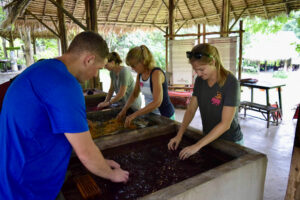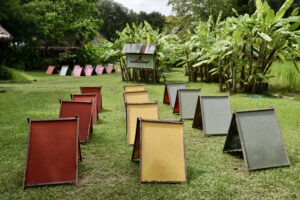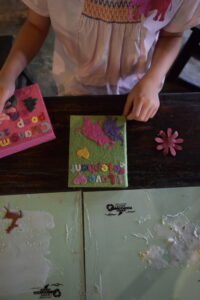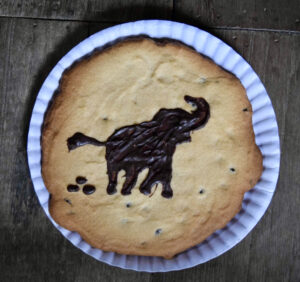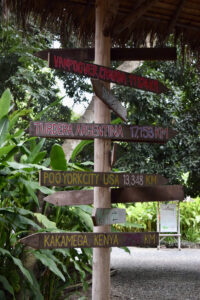We had a memorable experience getting to the Elephant PooPooPaper Park in Chiang Mai, Thailand. Our taxi driver told us lots of tales about life in Thailand. He even sang us a popular song about Elephants, or chang, in Thai. He told us that all Thai children learn this song in school. People in Thailand have a deep love and respect for elephants.
About the Elephant PooPooPaper Park
The Elephant PooPooPaper Park is an eco-friendly outdoor museum. There is an abundance of greenery so you never feel like you are crowded. Tours are offered by artisans and other people knowledgeable about sustainability and the history of papermaking.
Can You Really Make Paper Out of Elephant Poop?
Yes, you can! Usually, paper is made out of pulp from trees that have been harvested. Here, at the paper park, paper is made from animal dung. Primarily, they use poop from elephants. But, they also use poop from buffalo, cows, donkeys, and horses.
-
What Do These Animals Have in Common?
All the dung used in making paper at the museum is very fibrous. This is because the animals whose poop they use are herbivores, and they eat fruits, bamboo, grass, leaves, sugarcane, and twigs. These herbivores aren’t good at digesting their food either, making the poop even more fibrous.
Steps in the Paper Making Process at the Elephant PooPooPaper Park
There are several steps to the papermaking process. The guided tour takes about 45 minutes to an hour. The experience is very hands-on!
-
Collecting the Poo
Most of the dung is collected from elephant sanctuaries in the area. They only collect poo from sanctuaries that are ethical and practice sustainability. Our first stop was in the Poop Shed, where there are piles of dried poop and to observe and touch.
-
Cleaning the Poo
Dirt and rocks are taken out of the dung. Then the dung is boiled in water and stirred occasionally for four to six hours. This softens the fibers. This mixture isn’t smelly. The animals don’t eat meat and other things that cause poop to smell.
-
Mixing and Blending
At the next station, the softened fibers are mixed with other fiber pulp that is available during the season. These non-wood fibers might include cornstalks, hay, or banana tree trunks depending on the season. These additional fibers help the paper to be strong.
-
Dying and Forming Balls
When the blending is finished the material is a whitish color. Food coloring is mixed into each batch. People at the park make many different colors. Once the color is mixed in, the pulp is taken out of the mixer. Round balls of approximately the same size are formed.
-
Screening
There are many large sinks with water in them. A movable screen with a frame around it is placed at the bottom of each sink. A ball of fiber is placed in the water. The ball starts to come apart. The fibers sink and land on the screen. Then people spread the pulp fibers evenly over the screen using their hands. The screen is lifted out of the sink.
-
Drying
The screens are set in the sun so that the paper can dry. This usually takes a few hours. It depends on the weather and how much sun there is. Once the paper is dry, it is peeled off the screen.
-
Creating Things with the Finished Paper
After the paper is dry, it is cut into various shapes and sizes. Then, visitors are given the opportunity to make bookmarks, tags, and more at the last pavilion. There is an open-air store where many sustainable products can be bought. Cards, paper, bookmarks, shirts, and other things are available in the shop.
-
The Cafe at the Elephant PooPooPaper Park
The outdoor cafe serves coffee, drinks, and a few baked goods. We ate their famous elephant chocolate chip cookie. Some of the fruit drinks and food items are made with ingredients from the onsite organic garden. This sign with a little bathroom humor made us all chuckle!
This was a memorable family-friendly trip! So, if you are ever in Northern Thailand, make sure to visit the Elephant PooPooPaper Park!
Using What You Know About the Elephant PooPooPaper Park in the Classroom
So, how can you use this information in your classroom? There are so many topics that you could incorporate this into. Recycling, learning about scat, sustainability, and making paper to name a few.
You can use this video as a jumping-off point!
After watching the video, put students in small groups to brainstorm for recycled materials they can use to make paper. How will they mix their materials, make screens with frames, etc? Then have groups write down the steps they will use to make handmade paper. You might want to challenge students to make one finished product from the paper they make. Students can test papers to see which paper is the strongest. The ideas are really endless. If you have some good ones you want to share, comment below.
Here’s a link to an Instructables that shows how to make paper from recycled paper.
And, if you didn’t read about our trip to an elephant sanctuary in Chang Mai you really should!
And remember, it’s all science!
